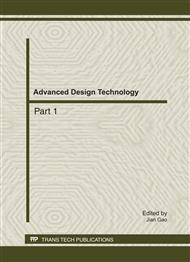p.162
p.167
p.174
p.178
p.182
p.189
p.193
p.197
p.201
The Simulation and Comparative Analysis of the Different Structure of Cyclone Separator, and the Construction of Optimal Experimental Model
Abstract:
Cyclone separator has been widely used in power, chemical engineering, etc and has been one of the most accepted separators for gas-solid. To obtain the optimal experimental model, the flow field and particles trajectory from different structure of cyclone separator were simulated and compared using RNG κ-ε model in FLUNT software. Then the optimal experimental model was obtained. Furthermore, the velocity and pressure in this model was simulated and analyzed. This optimal experimental model might provide basis for further designing effective and low-power-consumption cyclone separator.
Info:
Periodical:
Pages:
182-188
Citation:
Online since:
August 2011
Price:
Сopyright:
© 2011 Trans Tech Publications Ltd. All Rights Reserved
Share:
Citation:


